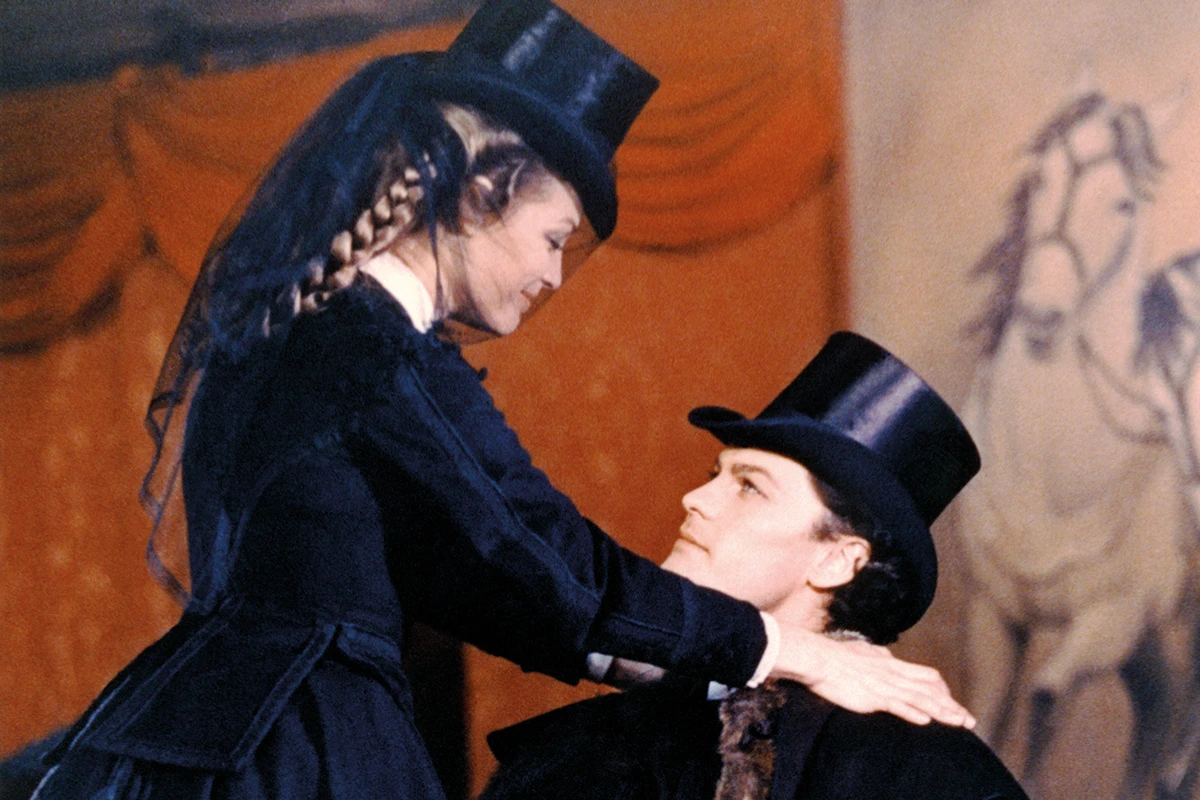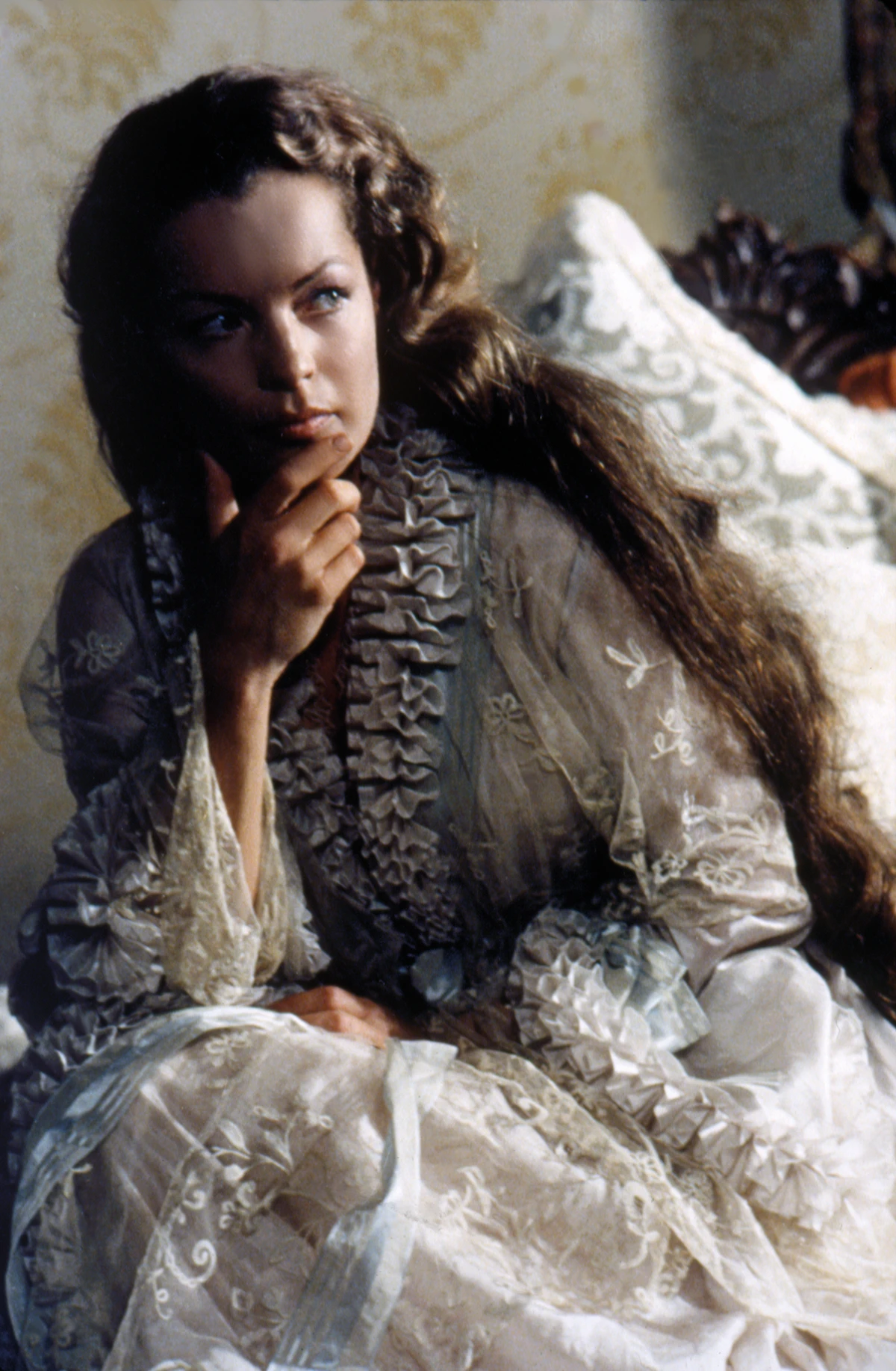
The Assassination of the Empress of Austria
Elisabeth of Austria was assassinated by an Italian anarchist: fragile and haunting, from Luchino Visconti’s portrayed the Empress in the movie Ludwig, with Romy Schneider
The story of the assassination of Elisabeth, Empress of Austria, at the hands of Luigi Lucheni, an Italian anarchist
Elisabeth, Empress of Austria, was assassinated in Geneva on September 10, 1898. She was 61 years old. Her killer was an Italian, a fanatical anarchist named Luigi Lucheni, who stabbed her in broad daylight on the street. The Empress was walking incognito, having refused the security arrangements offered by the local police. She was heading toward the pier to board a steamboat, walking briskly along the lakeside promenade. She was accompanied by a Hungarian countess, speaking with her in French. Without warning or preamble, Luigi Lucheni emerged from behind a tree, lunged at her, and knocked her to the ground.
It appeared to be a senseless altercation, the act of an unhinged or unstable individual. No one noticed that Lucheni had concealed a long, thin stiletto dagger, freshly sharpened, behind a bouquet of flowers. With a single, eerily precise strike, as though by a surgeon, Lucheni pierced the ventricle of the Empress’s heart. No one present realized what had occurred. Elisabeth got back to her feet, somewhat dazed and stunned, composed herself, and resumed her walk. She reached the pier and boarded the steamboat for what should have been a routine outing on the lake.
The boat set sail, but only minutes later, the Empress lost consciousness. Her corset, stiff and tightly laced, had initially contained the internal bleeding. A small dark stain appeared on her undergarments, just beneath her breast. The Hungarian countess screamed, calling her by the private nickname that would make her legendary: “Sissi,” thus revealing the true identity of the passenger onboard. The steamboat turned back to shore. The Empress succumbed to her injuries an hour later.
Luigi Lucheni and the Regicide in Geneva: the Empress dressed in black, with a veil over her face
Luigi Lucheni was arrested. When questioned about his motives, he declared that he wanted to kill the crown that oppressed the people. Lucheni had come to Geneva intent on assassinating a member of royalty, whoever he could find. His goal was regicide—a maniacal obsession that fueled subversive spirits and had consequences far graver than anyone could have imagined. Two years later, the King of Italy would be assassinated in Monza, and sixteen years after that, the murder of Austria’s crown prince would ignite the First World War.
Geneva was a popular summer retreat for Europe’s aristocracy. Local newspapers and hotel bulletins often published the names of notable visitors passing through or staying in the city. Lucheni had been waiting for the pretender to the French throne, the Duke of Orleans. An informant tipped him off about the Empress’s arrival, advising him on how to recognize her—Sissi was dressed in black, with a veil over her face, and traveled without an escort or entourage. Lucheni, one might suppose, could hardly have hoped for a better opportunity. He was later sentenced to life in prison. In his cell, he was found hanged—whether by suicide or murder remains unclear. His head would later become the subject of scientific study during an era when criminology sought physiological evidence of criminal minds, influenced by the theories of Cesare Lombroso.

In Europe, Only Three Women Could Boast the Title of Empress: The Pages of Proust
At the time of Elisabeth’s assassination, only two other women in Europe could claim the title of empress (excluding Queen Victoria of England, who was indeed Empress, but of India). Eugénie, Empress of France until 1870, had been deposed and exiled to England. We encounter her in the pages of Proust, where even while she still sat on the Parisian throne, she was shunned by the salons of the Guermantes’ circle, whose snobbery deemed her lineage insufficiently distinguished. The second, the Empress of Germany, presided over a newly formed empire that would last a mere 47 years before collapsing in 1918.
Neither of these two ladies would have dared to compete with the Empress of Austria, sovereign of a Habsburg Empire descended from Charles V—a lineage that, despite its decline, was still a direct continuation of the Holy Roman Empire. Had they tried, the ladies of Saint-Germain would have faded at the mere flick of Empress Elisabeth’s fan, such was her central role in the social and cultural logic of the Old Continent.
The German Confederation, Italian Colonies, and Hungary
When Elisabeth became Empress by marrying Franz Joseph of Habsburg in 1854, Austria was the leading power in Europe. The Emperor also served as president of the German Confederation, a structure established by Metternich at the Congress of Vienna after Napoleon’s downfall—a declaration that, if an empire was to exist in Europe, it would be Austria and Austria alone.
Austria controlled Italy—the Lombardy-Venetia region was its southern Mediterranean colony, and Trieste was its principal port. In Modena, Parma, and Tuscany, cadet branches of the Habsburg family ruled—a dominance that would crumble after the Battle of Solferino. By custom and reality, the Empress of Austria was the most celebrated woman of her era for her beauty, poise, and meticulous self-care (gymnastics, diet, sport, and cosmetics). She retained this stature for nearly the entirety of the 19th century, despite Queen Victoria’s position as a political and decision-making figure.
It is said that in her early years as Empress, Elisabeth sought to express her political views. Evidence of this might lie in her role in Hungary’s recognition. At the time, critics accused her of weakening Austria through the creation of the Dual Monarchy: Emperor of Austria and King and Queen of Hungary. However, historians tend to agree that this move was merely an acknowledgment of an unstoppable Hungarian nationalist tide.
The Battle of Solferino and Life at the Hofburg: Elisabeth Wittelsbach incognito
A life confined to formalities rather than substance: Elisabeth was shielded from the battlefield when she was denied permission to join her husband at Solferino. Successive pregnancies, a fraught relationship with a mother-in-law who had abdicated the throne for her eldest son—these and countless other circumstances would relegate a woman to the role of consort. With calculated strategy, she nurtured both her daily pleasures and hygiene, as well as the cultivation of her own legend. After the death of her son Rudolf, who shot himself in the temple, Elisabeth dressed in black. She wore a black veil to cover her face—some have speculated it was to hide the marks of a venereal disease passed on by the Emperor, though such claims may be mere slander.
The Hofburg Palace in Vienna was likely not a pleasant place to live—at least not at the time. Between its bureaucratic, administrative offices and the outdated infrastructure of the sprawling complex, one could easily imagine why one of the richest women in the world would prefer to live in Corfu or sail aboard a yacht.
After an initial period marked by shyness and adjustment, Elisabeth Wittelsbach emerges today as a woman who understood the role assigned to the Empress of Austria. She managed her duties, appreciated her privileges, and remained keenly aware of her influence over European society.
When Elisabeth was killed, she was in a serene retreat favored by those who considered the Empress of Austria the foundation of societal hierarchy. By staying incognito and removed from the public eye, she appeared even more unattainable—a dynamic that still resonates today. In Paris, replicas of the diamond stars Elisabeth wore in her Winterhalter portraits continue to circulate, perpetuating a snobbery reminiscent of those same society ladies.

Elisabeth of Austria and the Fragility of a Woman Turned Power: Born December 24, 1837
Anorexia, mononucleosis—assumptions about the physical and psychological fragility of the Empress have evolved over time. Yet one might question whether that fragility was itself a symptom of her human strength. (Lampoon finds its first inspiration in fragility for every narrative we publish—and it is for this reason we share this story.) Legends grew around Elisabeth’s figure. Was her obsession with beauty a personal pursuit or a matter of state?
Elisabeth—whom many would forever call Sissi—was born on Christmas Eve, December 24, 1837, in Munich, Bavaria. Her surname was Wittelsbach, the same as both her father and mother. Her father came from a cadet branch of the family, while her mother hailed from the main line. Her father held the title of Duke in Bavaria—the use of in instead of of signified his secondary status. Her mother’s branch, however, had ascended from dukes to sovereigns of Bavaria.
Luchino Visconti’s film released in 1973: In Ludwig, Romy Schneider portrays the Empress of Austria in a salon at Bad Ischl
In 1973, Luchino Visconti immortalized the Empress of Austria by directing Romy Schneider in Ludwig. The actress was 35 years old, portraying the sovereign for the second time in her career—after the Sissi trilogy, which she had undertaken as a teenager, perhaps without anticipating its massive popular success. Still youthful but now mature and confident in her beauty, Elisabeth emerges in Ludwig with the assurance of a modern-day woman in her forties. In the film, the Empress shares the narrative stage with Ludwig, the monarch who lends his name to the title. A fragment of cinematography reveals the essence with which Schneider and Visconti chose to portray the Empress of Austria.
In the imperial mansion at Bad Ischl, Ludwig visits the Empress for what appears to be an afternoon tea in the heart of winter: snow blankets the park, and twilight filters through the windows, mingling with candlelight. Entering the salon, Ludwig finds the Empress’s entire family present—everyone but the Empress herself. As he enters, all bow before him: Sissi’s brothers, sisters were cousins of the king. Sissi’s mother, Duchess Ludovica, approaches the sovereign and curtsies. Even though her daughter is Empress of Austria, and Ludwig is her half-brother’s son, Ludovica must offer deference to the ruler of the realm where she is a subject.
Without being announced, Elisabeth strides briskly into the salon. The family once again displays respect and reverence to the Empress. Elisabeth greets Ludwig with the commanding air. Ludwig presents her with a tuberose, which Elisabeth shows to her sister Sophie, having decided that Ludwig should marry her. Ludwig is infatuated with Elisabeth, as many fluid, ambiguous, indecisive, and romantic men might fall for a woman like her. To provoke him, Elisabeth turns her attention to Ludwig’s general, a historical paragon of heteronormativity.
Ludovica of Bavaria, Mother of the Empress: A Brilliant Group of Guests
Ludovica was the tenth of eleven children of the King of Bavaria. Nearly all her siblings had become crowned heads: her elder brother ruled his own kingdom, her sisters were Queens of Saxony, Prussia, and Bohemia. One of them, Sophie, became Archduchess of Austria. “A true family reunion,” remarks the gossipy duchess, delighting in the illustrious names gathered at the imperial residence. It was a dazzling group of guests: the Tsarevna and the Crown Prince of Prussia. “The Emperor himself will join us in a few days—n’est-ce pas, Elisabeth?”
The Empress heeds her mother’s unspoken command and ends her conversation with the general. She approaches Ludwig, seating herself opposite him. Enraged and jealous over Elisabeth’s plan to marry him off to her younger sister, Ludwig abruptly rises and takes his leave. As Ludwig exits the room, everyone must bow—everyone except Elisabeth, who remains seated in her superior position. After a moment, she rises and follows Ludwig to stop him on the stairs. Before leaving the salon, she signals with a subtle nod, raising her chin just slightly, ordering her family to rise from their bows—as if to suggest such excessive deference is unworthy of a monarch inferior to her.
Ludwig Will Not Marry Sophie of Bavaria: Homosexuality was still a taboo for some Germans but not for Visconti
Ludwig never married Sophie of Bavaria. His homosexuality, which remains a taboo subject for some Germans even today, was approached with openness by Visconti. Sophie of Bavaria would go on to become Queen of Naples, the last queen of the Bourbon dynasty. We encounter her again in the pages of Proust, in the salon of the Verdurins, where she defends Baron de Charlus from the hosts—scoundrels comparable to the army of Turin besieging the walls of Gaeta. Madame Verdurin is a pitiable snob, ridiculed by everyone—both within Proust’s novel and by anyone who has ever used that novel as a reference for understanding psychology, whether in the intimacy of a bed unmade by sex or in high society. By the time of Time Regained, Madame Verdurin has become the Princess of Guermantes—the highest-ranking member of the same circle that once snubbed Empress Eugénie.
Elisabeth of Austria and the Color Black: A Fan for Her Final Breath After the Assassination
Elisabeth of Austria always carried a fan, black like her clothing and the veil over her face. Even on the day of her assassination in Geneva, she held a black fan, which she may have used in an attempt to aid her final breath before fainting. That fan was later gifted by Franz Joseph to Eugénie Bonaparte as a gesture of respect for the friendship between the two empresses. It reminds us of a curious truth: snobbery thrives easily in middle circles and never among those who occupy the core of power.
In Vienna, on September 10, 1898, just hours after Elisabeth’s death, news reached the Emperor. Known to history as a man who slept on wooden boards without a mattress, Franz Joseph uttered a simple yet poignant sentence. Today, re-reading it, it resonates as a profound life lesson: “No one will ever know how much I loved that woman.”
Cinema and Fiction Dedicated to the Empress of Austria
From the Berlinale – Sisi & I with Sandra Hüller, the intellectual Corset of the Empress, and the pathetic TV series.
Beyond the iconic trilogy and Visconti’s film, the Empress of Austria continues to inspire audiovisual works. In Sisi & I, presented at the Berlinale in early 2024, Sandra Hüller plays a countess aspiring to become the Empress’s lady-in-waiting. Set in Greece, the story unfolds within a community of women where Elisabeth’s temperament leads to games on the beach and cliff diving, tinged with erotic lesbian undertones—evoking sensations of freedom and the thrill of female intimacy.
In recent years, this is the third fictional work centered on the sovereign, following the intellectual Corset of the Empress and the pathetic, laughable Netflix series.







